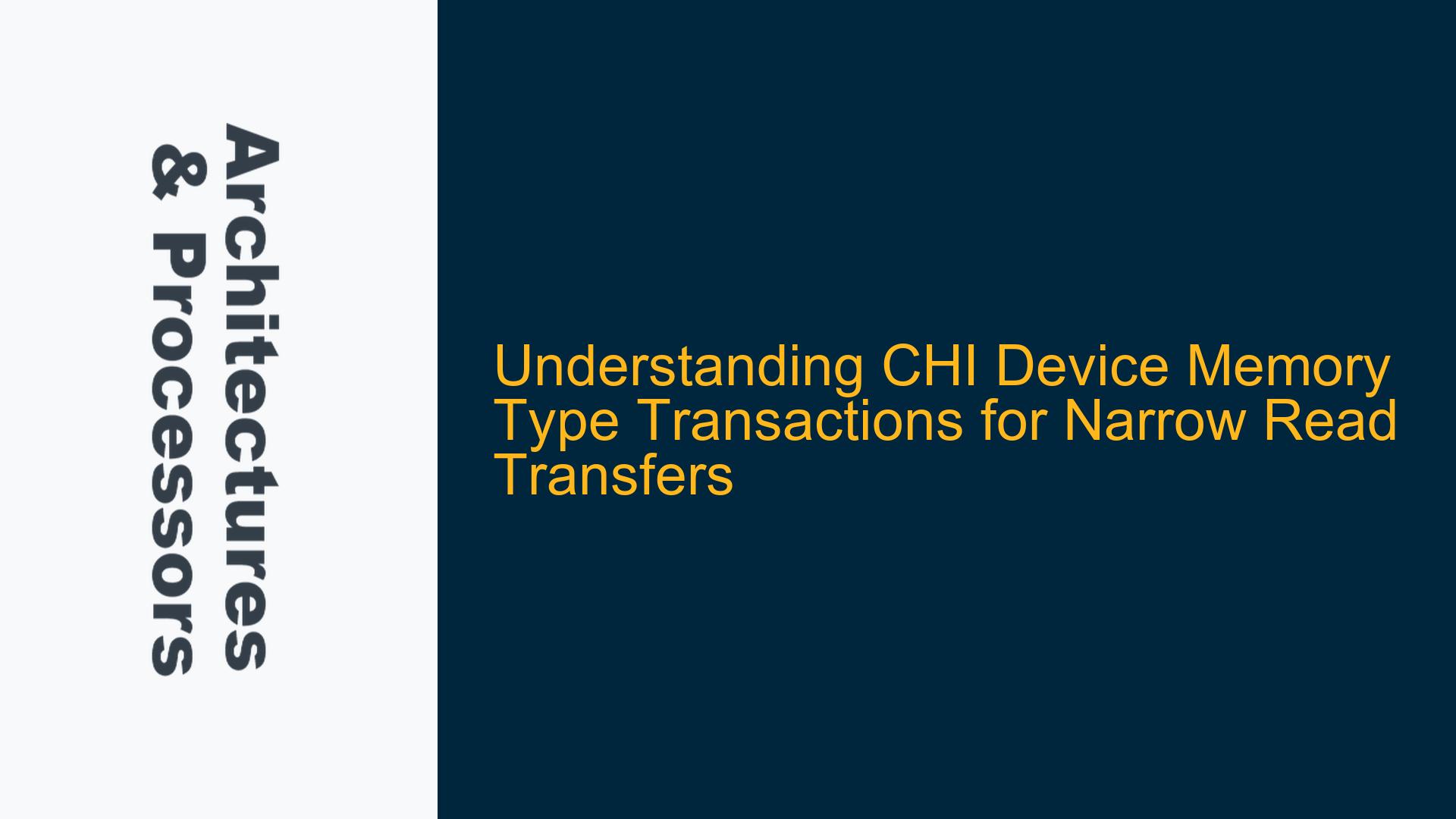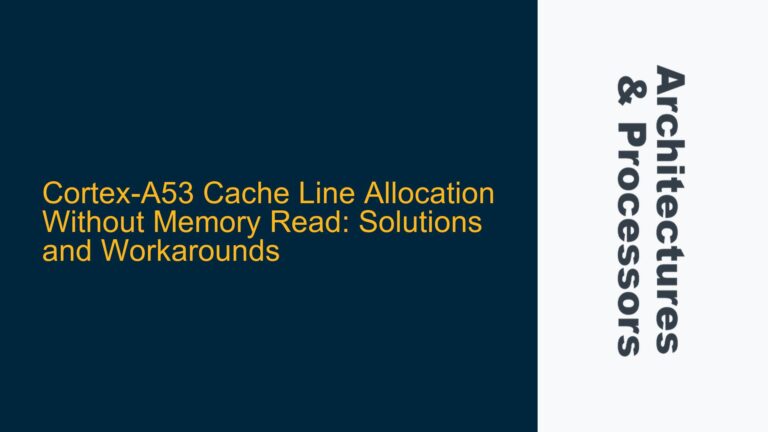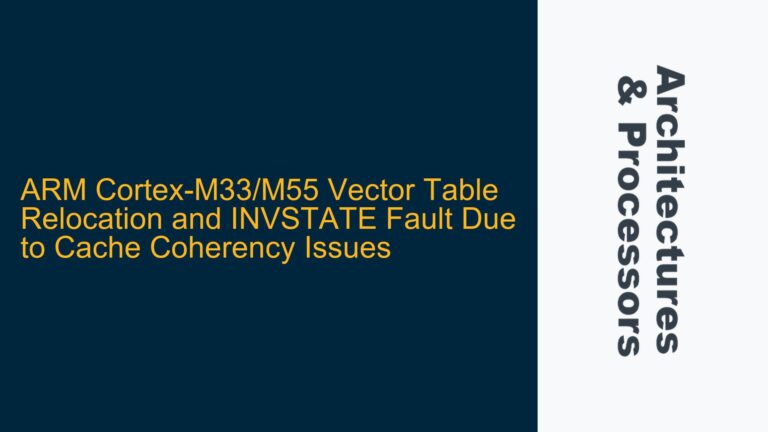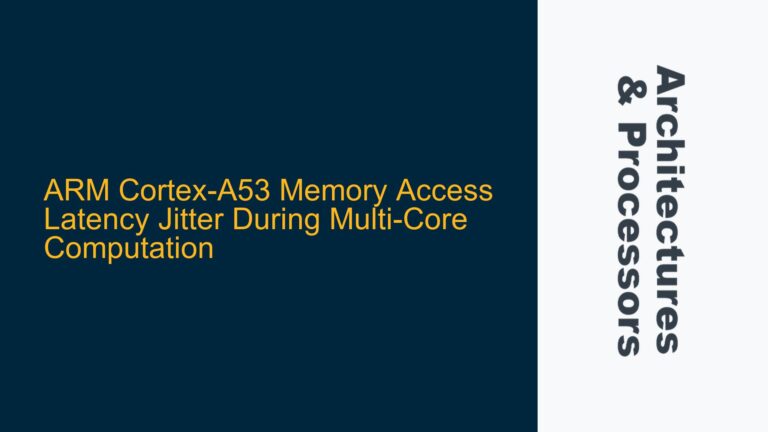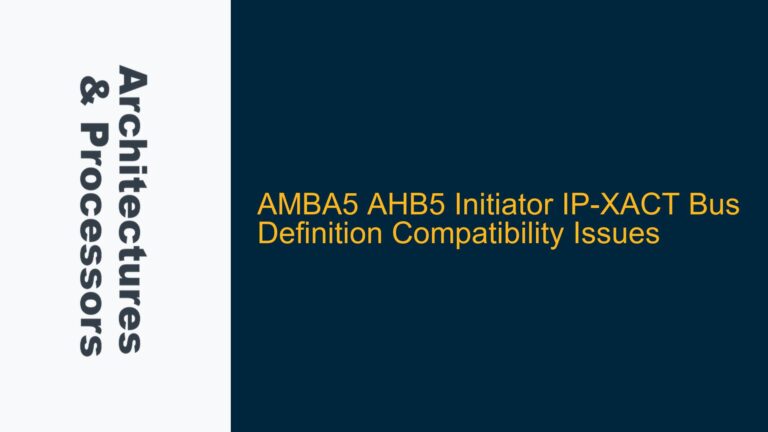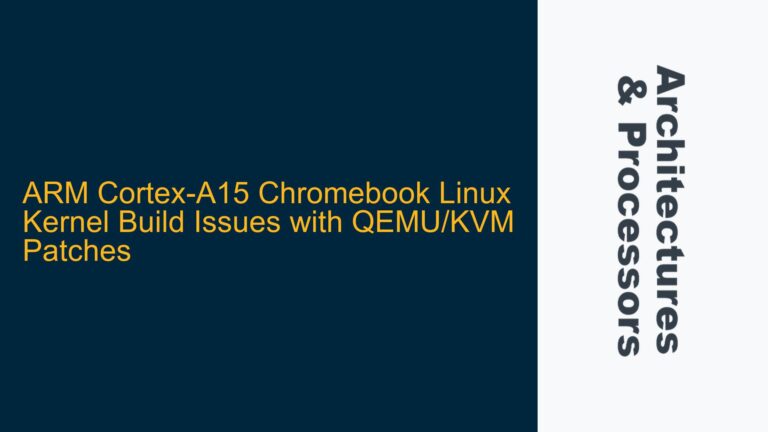ARM CHI Protocol: Device Memory Type Transactions and Narrow Read Transfers
The ARM Coherent Hub Interface (CHI) protocol is a critical component in modern ARM-based SoC designs, enabling efficient communication between various system components such as CPUs, GPUs, and memory controllers. One of the key features of CHI is its support for different memory types, including Normal and Device memory types. These memory types dictate how transactions are handled, particularly in terms of data transfer granularity and coherency. A specific point of interest is the behavior of Device memory type transactions, particularly in the context of narrow read transfers where the valid data bytes do not align with the size field specified in the transaction.
In the context of CHI, a narrow read transfer refers to a scenario where the amount of valid data returned in a read transaction is less than the full data width indicated by the size field. This is particularly relevant in Device memory type transactions, where the memory system may not support the full data width or where the requested data is not aligned with the natural boundaries of the memory system. Understanding how CHI handles these narrow read transfers is crucial for optimizing performance and ensuring correct system behavior.
The CHI protocol specifies that for Normal memory type transactions, the address wraps around to provide access to the remaining bytes if the data width is not fully utilized. However, for Device memory type transactions, the behavior is different. The protocol allows for the possibility that only a subset of the data bytes may be valid, even if the size field indicates a larger data width. This is particularly important in systems where Device memory may have specific access requirements or where the memory system is optimized for certain data transfer patterns.
Device Memory Type Transaction Behavior and Narrow Read Transfers
The behavior of Device memory type transactions in CHI is governed by the protocol’s handling of the size field and the valid data bytes. In a typical read transaction, the size field indicates the expected data width, but in Device memory type transactions, the actual valid data bytes may be less than this width. This discrepancy can arise due to several factors, including the nature of the Device memory itself, the alignment of the requested data, and the specific requirements of the memory system.
For example, consider a scenario where a read transaction is issued with a size field indicating a 64-byte data width, but the Device memory only returns 14 valid bytes. This is a narrow read transfer, and the CHI protocol must handle this situation correctly to ensure that the system operates as expected. The protocol specifies that in such cases, the valid data bytes are returned, and the remaining bytes are treated as invalid or don’t-care values. This behavior is in contrast to Normal memory type transactions, where the address would wrap around to provide access to the remaining bytes.
The CHI protocol’s handling of narrow read transfers in Device memory type transactions is particularly important in systems where Device memory may have specific access requirements. For instance, certain peripherals or memory-mapped I/O devices may only support specific data widths or may require that data be accessed in a particular manner. In these cases, the CHI protocol’s ability to handle narrow read transfers ensures that the system can still access the required data without violating the access requirements of the Device memory.
Addressing Narrow Read Transfers in CHI Device Memory Type Transactions
To address narrow read transfers in CHI Device memory type transactions, several steps can be taken to ensure that the system operates correctly and efficiently. These steps include understanding the specific requirements of the Device memory, optimizing the transaction size field, and ensuring that the system can handle the returned data correctly.
First, it is essential to understand the specific requirements of the Device memory. This includes understanding the supported data widths, the alignment requirements, and any specific access patterns that the memory may require. This information can typically be found in the technical reference manual (TRM) for the Device memory or in the documentation provided by the memory vendor. By understanding these requirements, the system designer can ensure that the CHI protocol is configured correctly to handle narrow read transfers.
Second, the transaction size field should be optimized to reflect the actual data width that is expected to be returned. In some cases, it may be possible to reduce the size field to match the expected data width, thereby avoiding the need for narrow read transfers. However, in cases where the size field cannot be reduced, the system must be designed to handle the returned data correctly. This includes ensuring that the system can identify the valid data bytes and ignore the invalid or don’t-care values.
Finally, the system must be designed to handle the returned data correctly. This includes ensuring that the data is correctly aligned and that any necessary data manipulation is performed to extract the valid data bytes. In some cases, this may involve using additional logic to mask out the invalid bytes or to re-align the data to match the expected format. By taking these steps, the system can ensure that narrow read transfers are handled correctly and that the system operates efficiently.
In conclusion, narrow read transfers in CHI Device memory type transactions are a critical aspect of ARM-based SoC design. By understanding the behavior of Device memory type transactions, optimizing the transaction size field, and ensuring that the system can handle the returned data correctly, system designers can ensure that their designs operate efficiently and correctly. This is particularly important in systems where Device memory may have specific access requirements or where the memory system is optimized for certain data transfer patterns. By following these steps, system designers can ensure that their designs are robust, efficient, and capable of handling the complexities of modern ARM-based SoC architectures.
